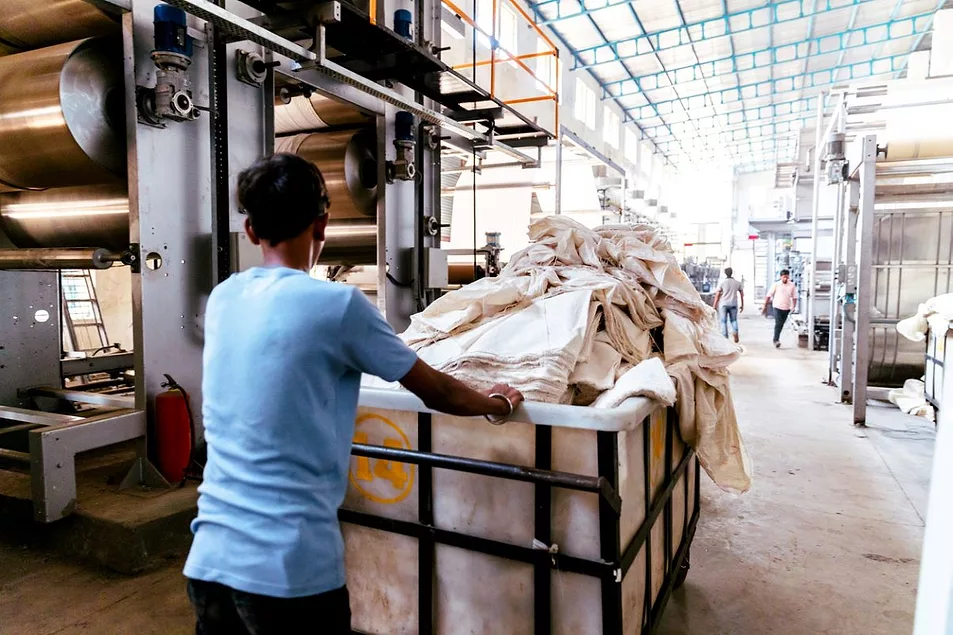Introduction
The blue‑collar labour shortage in India has reached alarming levels—nowhere more stark than in Madhya Pradesh’s industrial zones such as Pithampur, Dewas, Palda, and Sanwer Road. A survey by Pithampur Audhyogik Sangathan reveals shortfalls ranging from 10–35% depending on skill level: 10–15% in skilled roles, 15–25% in semi-skilled jobs, and 25–35% in unskilled segments
During peak seasons like festivals and weddings, shortages spike further—causing many factories to reduce operations from two or three shifts to just one, slashing productive capacity and contributing to a 5–8% rise in operational costs
Migration & Poor Infrastructure: Why Workers Are Leaving
Industrial associations highlight increasingly migratory behaviour among workers relocating to neighbouring states like Maharashtra and Gujarat, drawn by better working conditions and support systems. Employers warn that without retention-friendly infrastructure, local industries will struggle further.
To counter this, industry leaders propose:
- Secure accommodation (e.g. housing 50,000 workers in Pithampur),
- Improved transport,
- Access to schools and ESIC hospitals in industrial belts
— all aimed at making these zones more hospitable for labour retention
Structural Challenges & Skill Mismatch Across India
A. Rampant Informality & Low Job Quality
India’s labour ecosystem remains deeply informal: approximately 39 crore out of 47 crore workers are in the unorganized sector without contracts, social security, or benefits Drishti IAS. Even within formally employed segments, a significant portion are Informal workers, increasing workforce vulnerability.
B. Acute Skill Mismatch
Despite booming job creation, there’s a glaring gap: only 42.6% of graduates are deemed employable (per Mercer‑Mettl’s 2025 Graduate Skill Index), worsening the talent deficit as industries digitize.
In manufacturing, logistics, and construction, Deloitte’s Blue‑Collar Trends 2025 highlight 5–7% attrition rates, with frequent absenteeism and only 3% skill bench capacity, severely constraining productivity and retention efforts
C. Demographics: An Aging Workforce & Gen Z Reluctance
India’s industrial labor demographic is aging—with over half the workforce in their forties and fifties, leaving a widening generational gap as retirements surge. Meanwhile, Gen Z workers resist traditional blue‑collar roles due to parental expectations, low perceived growth, or unwillingness to work in shift-based environments—even in roles offering air-conditioned shop floors or free meals
In Mumbai and Pune, anecdotes from customers unable to book electricians or sound technicians for weeks suggest that some tradespeople are overloaded, not unemployed

Economic & Industry Fallout
Productivity Loss & Cost Escalation
Labour deficits have led to delays and disrupted production cycles. For instance, many units have slashed shifts or deferred dispatches—raising operational costs by 5–8%.
Additional stress occurs when industrial power outages—such as in Ludhiana—exacerbate labour inefficiencies, forcing costly downtime interruptions in manufacturing lines.
Missed “Make in India” Goals
India’s drive to spawn an electronics manufacturing hub has delivered initial success, but workforce shortages—especially in assembly-line workers and technicians in AI‑and‑robotics-heavy segments—threaten momentum. Without skilled workers, the sector risks slowing just as incentives wane
Missed “Make in India” Goals
A Crisil Intelligence report underscores that while India is poised to become a labour-export engine for the global economy, unchecked skill gaps will stall its ambitions.
Case Snapshot: Pithampur & Dewas – Maharashtra’s Retention Blueprint
In Madhya Pradesh’s Pithampur and Dewas zones—industries have reportedly sped up development of infrastructure like women’s hostels (1,700 beds) and transport services. Heavy advocacy for ESIC clinics and schools reflects a broader shift toward worker-friendly ecosystems.
A complementary “hire-and-train” partnership with local ITIs aims to build a talent pipeline, aligning training modules with employer needs and reducing onboarding gaps
Conclusion & Call to Action
India stands at a critical inflection point. Its demographic dividend and manufacturing ambition are threatened by blue-collar workforce shortages, high attrition, and shifting worker expectations. Unless infrastructure, training ecosystems, employer practices, and societal perceptions are aligned toward retention and dignity, the labour crisis will continue eroding growth.
Key takeaways for stakeholders:
- Policymakers must fast-track worker-oriented infrastructure and embed skill development schemes like ITIs and PMKVY.
- Employers should invest in compensation, well-being, flexible practices, housing and tech-driven workforce management.
- Industry bodies need to collaborate with education institutions to co-develop training and placement pipelines.
- Society at large must reclaim the respectability of blue-collar trades, recognizing them as essential, skilled, and aspirational.
By addressing labour shortages with strategy, empathy, and technology, India can unlock its full potential—revitalizing manufacturing, empowering workers, and reinforcing its global competitiveness.




